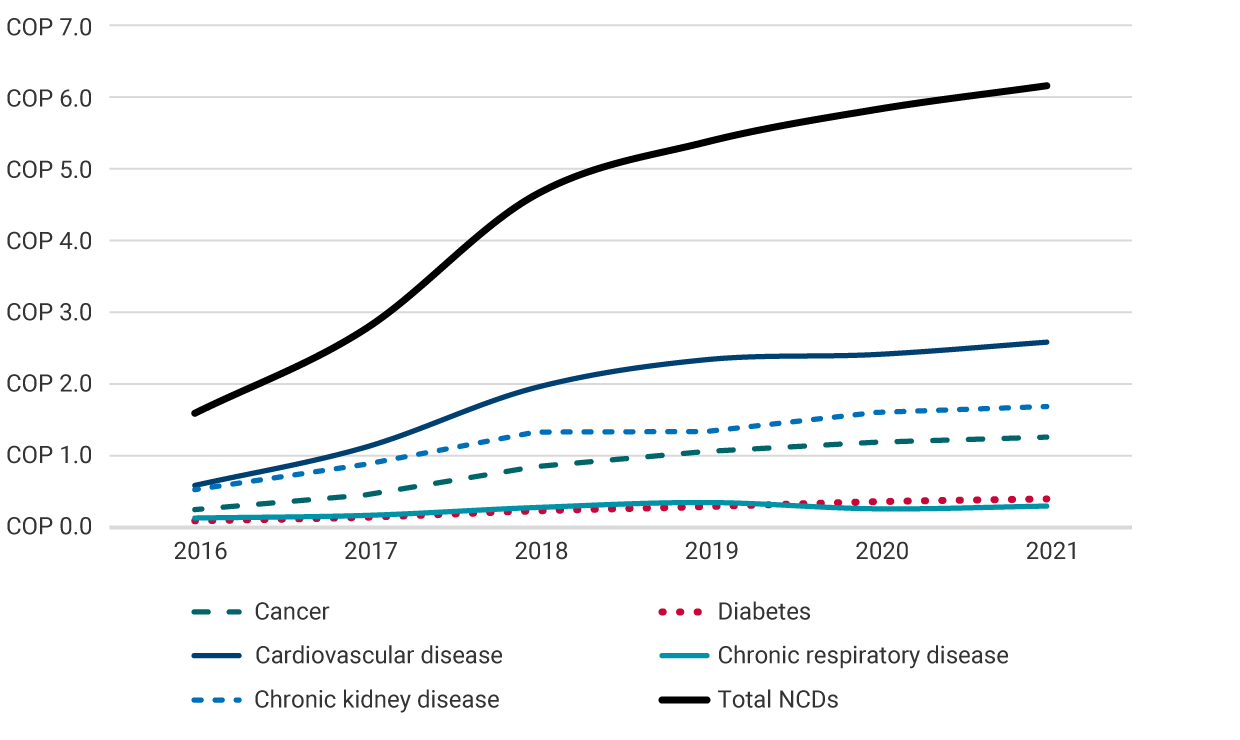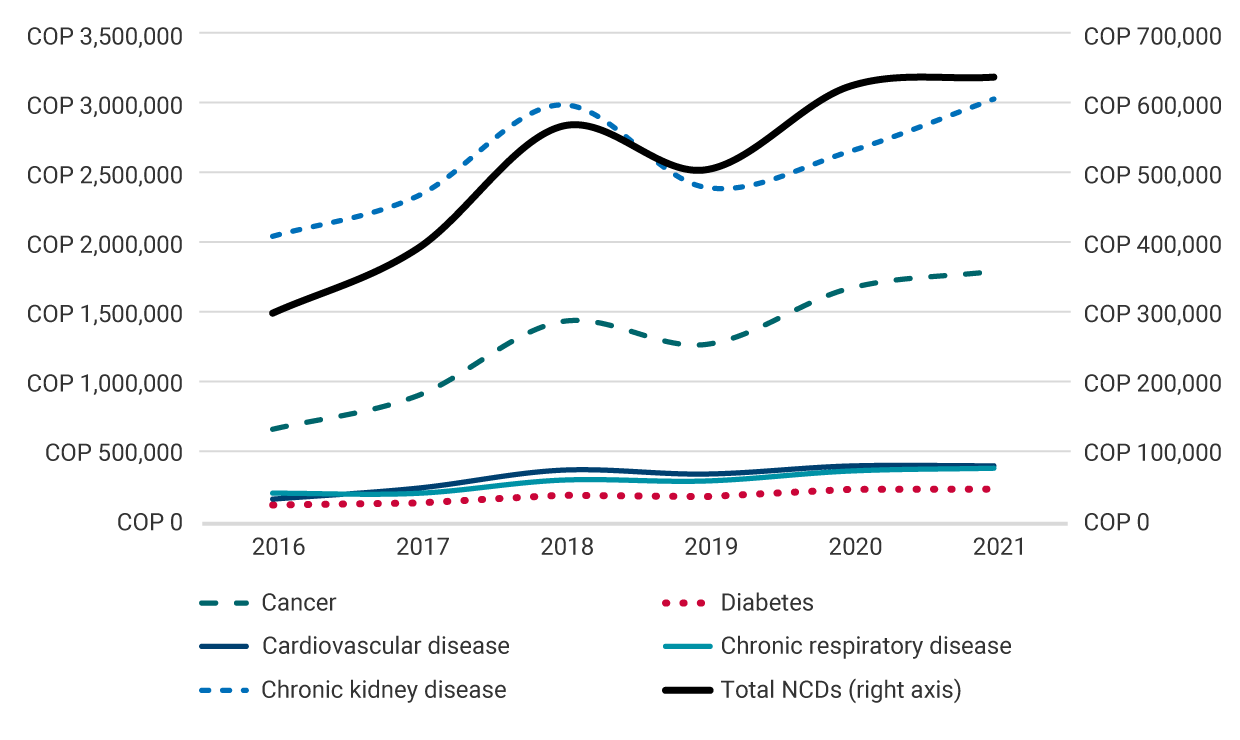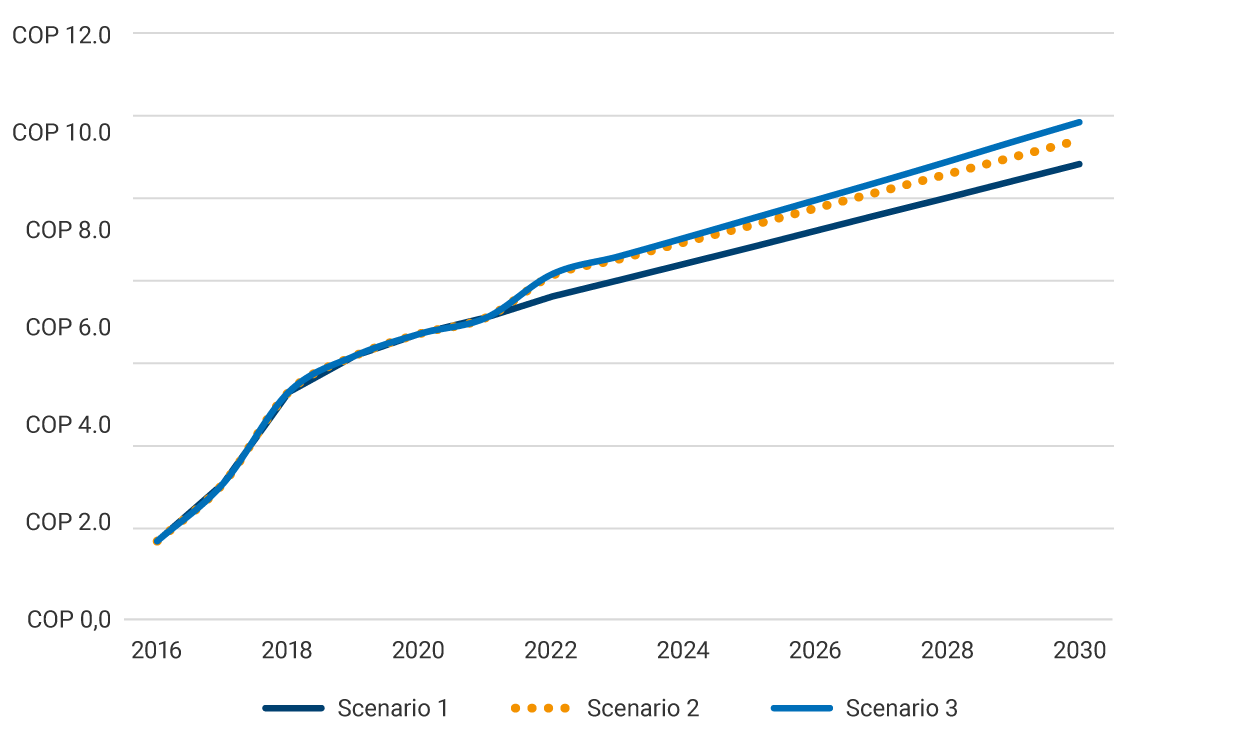Chronic noncommunicable diseases (NCDs) are the leading cause of mortality in the world. These diseases are mainly associated with older age groups and, therefore, their financial burden is expected to increase progressively due to the aging of the population and risk factors derived from unhealthy lifestyle habits. In Colombia, the rise in the prevalence of these diseases has a direct effect on health care system costs, not only because of the treatments and drugs used, but also because of the increase in the population with these comorbidities, making it a challenge for the management of the sector's finances.
In a chapter of a recent document in the ESPE (available in Spanish) journal from Banco de la República (the Central Bank of Colombia) on financial and macroeconomic aspects of the health care system, a group of researchers estimates the costs associated with NCDs, including cancer, cardiovascular disease, diabetes, chronic respiratory disease, and chronic kidney disease. The study is based on calculations of the number of consultations, procedures, emergencies, and hospitalizations obtained from the Individual Registry of Health Services Provision (RIPS in Spanish) of the Ministry of Health and Social Protection. The estimated costs probably underestimate the total system cost, as they do not include drug costs or expenses not financed by the Capitation Payment Unit (UPC in Spanish).
Graph 1 shows the estimated costs of NCDs services, both total and per person receiving care, between 2016 and 2021, expressed in Colombian pesos of 2021 . There is a significant increase in total costs from 2017 onwards, mainly explained by the increase in the costs of cardiovascular diseases and cancer. In turn, costs per person receiving care, i.e., the total cost divided by the number of people diagnosed with a NCD, also increased significantly from 2019 onwards.
Graph 1. Costs of NCD Care, 2016-2021
Total costs (trillions of pesos of 2021)

Costs per person receiving care (pesos of 2021)

Source: Melo-Becerra et al. (2023).
The document also contains a prospective analysis of the total costs associated with NCDs through 2030, considering the number of people receiving care and some assumptions about the growth of service costs. Three scenarios were considered: in the first, it is assumed that the costs of services remain constant and, therefore, the total cost increases at the same rate as the number of people receiving care; in the second scenario, growth in the population receiving care and a projection of inflation in the costs of services, which has been historically higher than average inflation, are considered; finally, the third scenario includes the two previous effects and adds an increase in real costs due to the technical change involved in the use of relatively expensive technologies.
The results of these calculations are shown in Graph 2 and suggest that in 2030, the total costs of NCDs (in trillions of pesos of 2021) would reach COP 9.3 trillion in scenario 1, COP 9.8 trillion in scenario 2, and COP 10.2 trillion in scenario 3. These results are based on projections based on observed data and the historical behavior of the different variables. It is possible that prevention policies and the promotion of healthy habits will mitigate the growth of NCDs in the future. However, it is not foreseeable that this type of policies will have an effect before 2030.
Note that, in all three scenarios, the calculations anticipate an increase in real annual costs of more than 50% over the 2020-2030 decade. Compared to 2016, by 2030, the real costs associated with NCDs are anticipated to increase fivefold. Comparing the paths of the three scenarios in Graph 2, it can be seen that the main determinant of cost growth is population aging. The increase in health care costs for this disease segment is therefore an urgent challenge for public policy.
Graph 2. Projected total NCD costs, 2022-2030 (trillions of pesos of 2021)

Source: Melo-Becerra et al. (2023).

































































